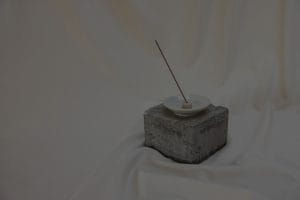**Abstract:**
Creating a mindful meditation space using Feng Shui principles can enhance your inner peace and overall well-being. This guide will help you design a serene environment that nurtures tranquility and mindfulness.
Understanding Feng Shui: The Art of Energy Flow
Feng Shui, an ancient Chinese practice, focuses on harmonizing individuals with their surrounding environment. By arranging your space thoughtfully, you can enhance the flow of positive energy, or “Chi.” This energy directly impacts your mental and emotional state, making it crucial for creating a meditation space that fosters inner peace. Understanding these principles is the first step in designing a mindful meditation area that resonates with tranquility and balance.
Selecting the Right Location: Finding Your Peaceful Corner
The location of your meditation space is vital. Ideally, it should be in a quiet area of your home, away from distractions. Look for a spot that receives natural light, as it can uplift your mood and enhance your focus. If possible, choose a corner with a view of nature, as this connection can deepen your sense of peace. Remember, a clutter-free environment is essential; it allows for the free flow of Chi and promotes a calm mindset during your meditation sessions.
Color Schemes: Invoking Calmness and Serenity
Colors play a significant role in setting the mood of your meditation space. Soft, neutral tones like blues, greens, and earth tones are known to evoke feelings of calmness and serenity. These colors not only promote relaxation but also create an inviting atmosphere that encourages mindfulness. Consider painting the walls in these soothing shades or incorporating them through decor and accessories. The right color palette can significantly enhance your meditation experience.
Incorporating Natural Elements: Bringing the Outdoors In
Integrating natural elements into your meditation space can elevate its energy. Plants, stones, and water features are excellent choices. Plants like peace lilies and bamboo not only purify the air but also symbolize growth and harmony. A small water fountain can create a soothing sound, enhancing your focus and tranquility. By bringing nature indoors, you create a serene environment that resonates with the calming essence of the natural world.
Mindful Decor: Choosing Items that Inspire
When selecting decor for your meditation space, choose items that inspire peace and mindfulness. Consider incorporating meaningful symbols, such as Buddha statues or crystals known for their calming properties. Each item should serve a purpose and resonate with your personal journey. Remember, less is more; a cluttered space can lead to a cluttered mind. Keep decor minimal and intentional, allowing for a clear focus during meditation.
Creating a Ritual: Establishing Consistency for Inner Peace
Establishing a meditation ritual can enhance the effectiveness of your practice. Consistency is key; try to meditate at the same time each day to cultivate a habit. Incorporate elements like incense or calming music to signal the start of your meditation. These rituals create a sense of sacredness around your practice, making it easier to enter a state of mindfulness. Over time, this consistency can lead to profound inner peace and emotional stability.
Final Thoughts: Nurturing Your Mindful Space
Designing a mindful meditation space using Feng Shui principles is a journey towards inner peace. By understanding energy flow, selecting the right location, and incorporating natural elements, you can create a sanctuary for tranquility. The colors, decor, and rituals you choose will further enhance this space, allowing you to cultivate a deeper connection with yourself. Embrace this process and remember that your meditation space should evolve with you, nurturing your path to mindfulness and serenity.










